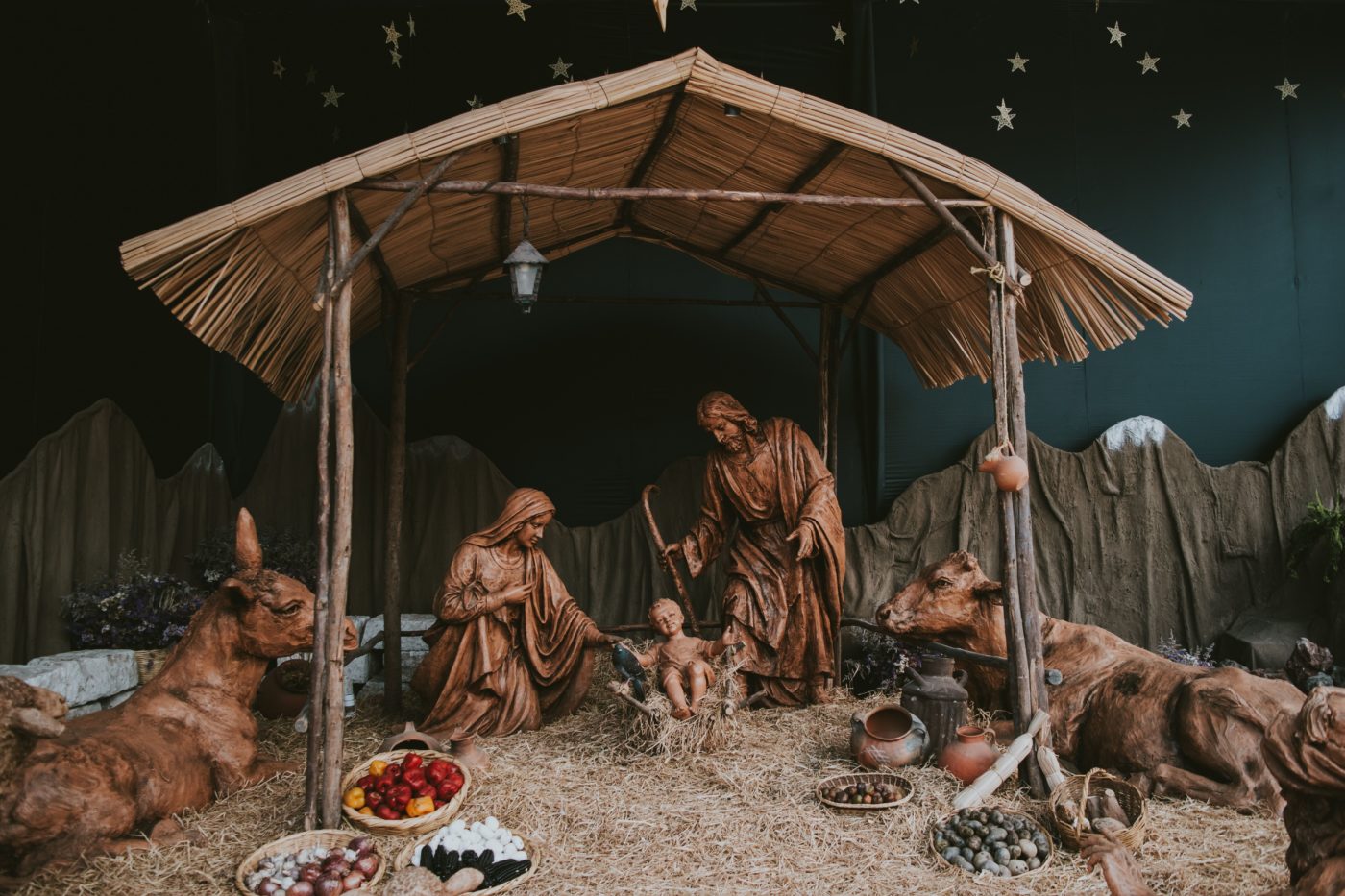
The Original Christmas
What do we know about the original Christmas? The more we explore about the roots of Christmas, the more we discover that it is an event anchored in history, not in mere tradition or emotion. This article delves into some of the major historical questions that come up when considering the original Christmas.
Christmas was a really, really big deal for me growing up.
December 24-25th were magical days. I can still see the Canadian snow glistening as it reflected the Christmas lights. I can smell the food at family gatherings as my grandmother helped prepare delicious meals. I can still hear my mother singing Christmas carols off-key at one of our rare visits to church (Easter was the other one).
It was a magical time as I found myself connecting to God through the marvelous story of the birth of Jesus.
But there’s a side to Christmas other than the magical impressions and sweet memories. There’s a side to Christmas that is as solid as the rock wall of a cave, as earthy as a field of grass, as factual as a date on the timeline. In other words, Christmas isn’t just about happy emotions; it’s about a historical event.
“Christmas isn’t just about happy emotions; it’s about a historical event.”
Multiple times, I have visited the sites in Israel where the events of Christmas took place. Together, let’s look at some of the facts and findings surrounding the original Christmas, and then we can reflect on how they can impact us today.
The Basic Story from the Bible
Luke 2:4-7 (NIV) says, “So Joseph also went up from the town of Nazareth in Galilee to Judea, to Bethlehem the town of David, because he belonged to the house and line of David. He went there to register with Mary, who was pledged to be married to him and was expecting a child. While they were there, the time came for the baby to be born, and she gave birth to her firstborn, a son. She wrapped him in cloths and placed him in a manger, because there was no guest room available for them.”
When Did These Things Happen?
It would make sense for Jesus to have been born at the moment that BC switched to AD. After all, BC means “before Christ,” and AD means “in the year of our Lord.”
However, the monk who created our calendar around 500 years after Jesus got the year of Jesus’ birth wrong. King Herod, the paranoid monarch who tried to kill the baby Jesus, died in March of 4 BC. Therefore, Jesus would have been born in 5 BC or further back.
What Do We Know about the Villain?
When King Herod had heard visitors from the East speak about the birth of another king, one born King of the Jews, he felt threatened. After all, Herod was an Edomite, not a Jew, and he had not been born king, but appointed by Caesar. Thus, Herod schemed to kill the baby, by waiting until the Magi had located the child and then pouncing.
Matthew 2:7-8 (NIV) tells us,
“Then Herod called the Magi secretly and found out from them the exact time the star had appeared. He sent them to Bethlehem and said, ‘Go and search carefully for the child. As soon as you find him, report to me, so that I too may go and worship him.’”
It is well-known from other historical records that Herod was infamously paranoid. He had killed so many members of his own family on suspicion that they were after his throne that Caesar Augustus quipped, “It is better to be Herod’s pig than his son.”
Herod is not only a well-known figure from written historical records, but from archaeology too. He built many palaces, and the remnants of some of the palaces are still in existence. For example, just outside of Bethlehem is his palace Herodium.
 Herod’s Herodium Palace today
Herod’s Herodium Palace today
In 2007, something very interesting and surprising happened at Herodium. Archaeologists unearthed the tomb of King Herod.
 King Herod’s Tomb
King Herod’s Tomb
What Do We Know about the Town Jesus Was Born In?
Bethlehem is about 5 miles outside Jerusalem. It was the birthplace of King David, the forefather of Jesus. Numerous Old Testament prophecies had predicted the coming of a messianic king in the vein of King David.
The original Christmas: “Numerous Old Testament prophecies had predicted the coming of a messianic king in the vein of King David.”
It was not only prophesied that a messianic king like David would come, but also that he would be born in the city of David, Bethlehem. Micah 5:2-4 (NIV) says,
“But you, Bethlehem Ephrathah, though you are small among the clans of Judah, out of you will come for me one who will be ruler over Israel, whose origins are from of old, from ancient times. . . . He will stand and shepherd his flock in the strength of the Lord, in the majesty of the name of the Lord his God. And they will live securely, for then his greatness will reach to the ends of the earth.”
Modern Bethlehem is in the exact same location as in New Testament times.
Where Were the Shepherds?
Shepherds near Bethlehem were the first to hear about the birth of Jesus. Luke 2:8-9 (NIV) says,
“And there were shepherds living out in the fields nearby, keeping watch over their flocks at night. An angel of the Lord appeared to them, and the glory of the Lord shone around them, and they were terrified.”
Ancient sites for the shepherd’s fields have been well marked from the earliest days.
The original Christmas: “Ancient sites for the shepherd’s fields have been well marked from the earliest days.”
There were very few good fields in the area outside the ancient village of Bethlehem for sheep to graze on grass. One place marked from early on is now part of the modern city of Bethlehem. The picture below is the walkway into the area of the “Shepherd’s Field.”
 Was Jesus Born in a Barn?
Was Jesus Born in a Barn?
In the time of Jesus, animals were kept in caves, and the manger (feeding trough) used for Jesus’ crib would have been in one of those caves. The caves were usually located close to the homes, sometimes with the home built just outside the cave. Caves in Bethlehem are roughly 70 degrees in summer or winter, so it was an ideal environment for the birth of a baby. Once Mary gave birth, she would have been ritually unclean according to Jewish law. Thus, giving birth to Jesus in a cave would have kept her out of the house and kept the house from become ritually unclean.
Though not one of the first century Gospels, an ancient writing about Jesus’ birth by a second-century writer named James (not the James of the Bible) says that Jesus was born in a cave. This description also matches the archaeological evidence. The Church of the Nativity was built by Helena (Constantine’s mother) in the early 300s on the spot that had been marked by early believers as the place of Jesus’ birth. There is strong evidence that this was the location of Jesus’ birth.
The original Christmas: “There is strong evidence that this was the location of Jesus’ birth.”



The fireplace-like spot marks the traditional spot of the manger
More than History, Not Less than History
Again, Christmas isn’t just about happy emotions; it’s about a historical event. But there are all sorts of historical events which passively sit on the timeline and don’t intervene in people’s everyday lives. You have probably forgotten all sorts of historical facts that you once learned in history class growing up. After all, the date of the Spanish Armada’s defeat or the price of the Louisiana Purchase may have seemed to have little to no relevance to your life.
The original Christmas: “When it comes to the events surrounding the birth of Jesus, the relevance to your life cannot be overstated.”
When it comes to the events surrounding the birth of Jesus, the relevance to your life cannot be overstated. For if we were visited by God in the flesh (Matthew 1:23; Luke 1:35; John 1:14), then we have every reason to pay more attention to Jesus Christ than to anything else past, present, or future. As God in the flesh, Jesus deserves more allegiance than any other king and more trust than any other leader. He is not just a child in a manger to celebrate; He is a King to trust and follow.








